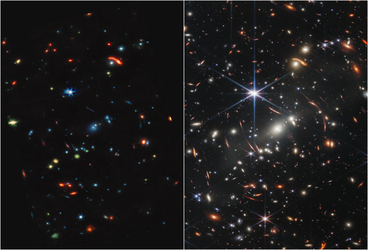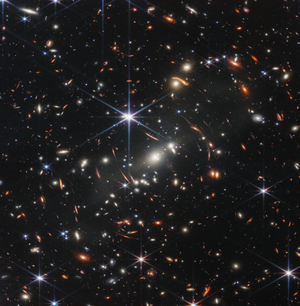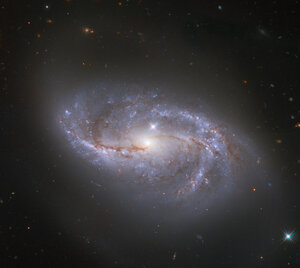Accept all cookies Accept only essential cookies See our Cookie Notice

About ESA
The European Space Agency (ESA) is Europe’s gateway to space. Its mission is to shape the development of Europe’s space capability and ensure that investment in space continues to deliver benefits to the citizens of Europe and the world.
Highlights
ESA - United space in Europe
This is ESA ESA facts Member States & Cooperating States Funding Director General Top management For Member State Delegations European vision European Space Policy ESA & EU Space Councils Responsibility & Sustainability Annual Report Calendar of meetings Corporate newsEstablishments & sites
ESA Headquarters ESA ESTEC ESA ESOC ESA ESRIN ESA EAC ESA ESAC Europe's Spaceport ESA ESEC ESA ECSAT Brussels Office Washington OfficeWorking with ESA
Business with ESA ESA Commercialisation Gateway Law at ESA Careers Cyber resilience at ESA IT at ESA Newsroom Partnerships Merchandising Licence Education Open Space Innovation Platform Integrity and Reporting Administrative Tribunal Health and SafetyMore about ESA
History ESA Historical Archives Exhibitions Publications Art & Culture ESA Merchandise Kids Diversity ESA Brand CentreLatest
Space in Member States
Find out more about space activities in our 23 Member States, and understand how ESA works together with their national agencies, institutions and organisations.
Science & Exploration
Exploring our Solar System and unlocking the secrets of the Universe
Go to topicAstronauts
Missions
Juice Euclid Webb Solar Orbiter BepiColombo Gaia ExoMars Cheops Exoplanet missions More missionsActivities
International Space Station Orion service module Gateway Concordia Caves & Pangaea BenefitsLatest
Space Safety
Protecting life and infrastructure on Earth and in orbit
Go to topicAsteroids
Asteroids and Planetary Defence Asteroid danger explained Flyeye telescope: asteroid detection Hera mission: asteroid deflection Near-Earth Object Coordination CentreSpace junk
About space debris Space debris by the numbers Space Environment Report In space refuelling, refurbishing and removingSafety from space
Clean Space ecodesign Zero Debris Technologies Space for Earth Supporting Sustainable DevelopmentLatest
Applications
Using space to benefit citizens and meet future challenges on Earth
Go to topicObserving the Earth
Observing the Earth Future EO Copernicus Meteorology Space for our climate Satellite missionsCommercialisation
ESA Commercialisation Gateway Open Space Innovation Platform Business Incubation ESA Space SolutionsLatest
Enabling & Support
Making space accessible and developing the technologies for the future
Go to topicBuilding missions
Space Engineering and Technology Test centre Laboratories Concurrent Design Facility Preparing for the future Shaping the Future Discovery and Preparation Advanced Concepts TeamSpace transportation
Space Transportation Ariane Vega Space Rider Future space transportation Boost! Europe's Spaceport Launches from Europe's Spaceport from 2012Latest

Galaxy cluster MACS J1423 (NIRCam image)
Thank you for liking
You have already liked this page, you can only like it once!
Thousands of glimmering galaxies are bound together by their own gravity, making up a massive cluster formally classified as MACS J1423.
The largest bright white oval is a supergiant elliptical galaxy that is the dominant member of this galaxy cluster. The galaxy cluster acts like a lens, magnifying and distorting the light from objects that lie well behind it, an effect known as gravitational lensing that has big research benefits. Astronomers can study lensed galaxies in detail, like the Firefly Sparkle galaxy.
This 2023 image is from the NASA/ESA/CSA James Webb Space Telescope’s NIRCam (Near-InfraRed Camera). Researchers used Webb to survey the same field that the NASA/ESA Hubble Space Telescope imaged in 2010. Thanks to its specialisation in high-resolution near-infrared imagery, Webb was able to show researchers many more galaxies in far more detail.
[Image description: Thousands of overlapping objects at various distances are spread across this field, including galaxies in a massive galaxy cluster, and distorted background galaxies behind the galaxy cluster. The background of space is black.]
-
CREDIT
NASA, ESA, CSA, STScI, C. Willott (NRC-Canada), L. Mowla (Wellesley College), K. Iyer (Columbia) -
LICENCE
CC BY 4.0 INT or ESA Standard Licence
(content can be used under either licence)

Firefly Sparkle Galaxy Inset (NIRCam Image)

Bullet Cluster (NIRCam Image)

Webb’s first deep field (MIRI and NIRCam)

Webb’s first deep field















 Germany
Germany
 Austria
Austria
 Belgium
Belgium
 Denmark
Denmark
 Spain
Spain
 Estonia
Estonia
 Finland
Finland
 France
France
 Greece
Greece
 Hungary
Hungary
 Ireland
Ireland
 Italy
Italy
 Luxembourg
Luxembourg
 Norway
Norway
 The Netherlands
The Netherlands
 Poland
Poland
 Portugal
Portugal
 Czechia
Czechia
 Romania
Romania
 United Kingdom
United Kingdom
 Slovenia
Slovenia
 Sweden
Sweden
 Switzerland
Switzerland

























